Metal AM in automotive: How the Czinger 21C is redefining next-generation car manufacturing
The Czinger 21C hypercar is a 'tour de force' of metal Additive Manufacturing. With over 350 AM components used in the vehicle's structure, suspension, brake systems, drivetrain and beyond, this is the realisation of the bold vision of Kevin Czinger, CEO of Divergent 3D. Behind the headlines about the car's record-breaking performance, however, is a far more important story: the development of the Divergent Adaptive Production System (DAPS), a complete software/hardware solution designed to replace traditional vehicle manufacturing. Jeff Kerns reports for Metal AM magazine. [First published in Metal AM Vol. 7 No. 4, Winter 2021 | 20 minute read | View on Issuu | Download PDF]
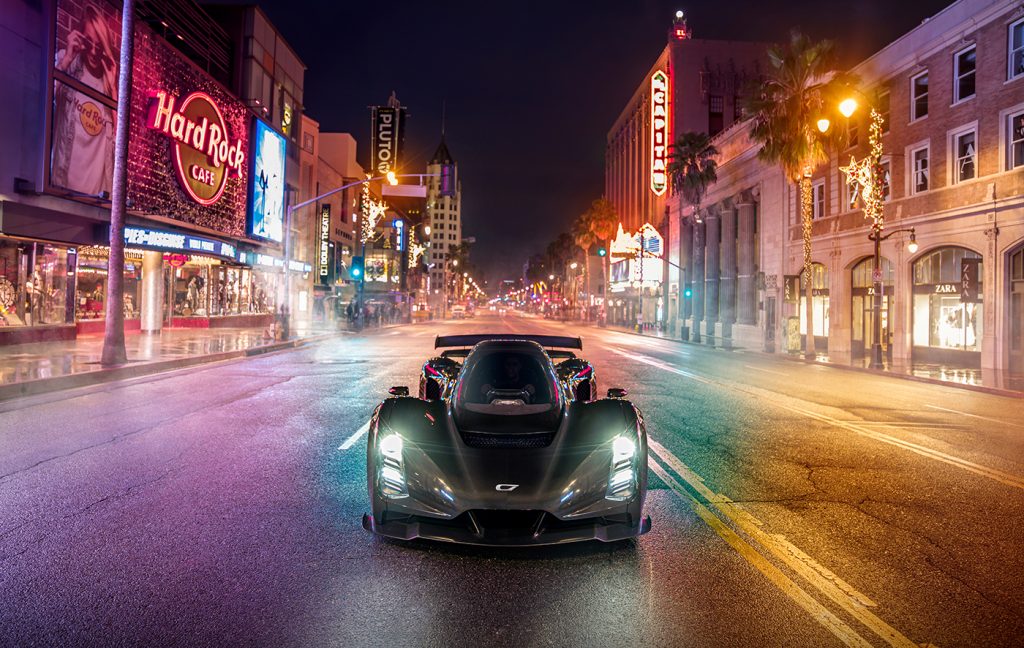
The automotive industry is undergoing many changes, with regulations and demands for greater sustainability and electrification driving innovation. Current tooling and production volumes in the automotive industry often lead to incumbent inertia. As a result of these factors, OEMs are looking for new solutions to increase production, adhere to regulations, and increase flexibility.
Metal Additive Manufacturing is a proven solution. Other industries, such as aerospace, now widely use metal AM to increase efficiency, reduce part count, eliminate tooling, reduce time to market, and more. However, this technology is still nascent when it comes to bridging the gap between prototyping and production in the automotive space.
Divergent 3D, based in Torrance, California, USA, was founded in 2014 with the aim of revolutionising the automotive industry through advanced technologies such as metal AM. In 2019, the automotive manufacturer Czinger Vehicles was founded; this company is majority owned and controlled by Divergent 3D, but separately financed. This article introduces the company and man behind Divergent 3D, Kevin Czinger, and the Czinger 21C hypercar (Fig. 1), to explore how the solutions developed by these two companies are changing the way OEMs are thinking of automotive production.
Metal Additive Manufacturing in the automotive industry
Prototyping with metal AM is nothing new in the automotive industry. R&D can often justify higher prices to test a part and make design iterations faster and more productive. As metal AM advances, the question looms of if, or how, this technology will move from prototyping to production.
The cost benefit of additively manufacturing conventional automotive parts is not enough to justify the investment cost for current metal AM production. For metal AM to bridge the gap between prototyping and production, engineers need to change the way they think of design. The traditional design constraints that have become standard in automotive design are not the same constraints that exist in AM. Additionally, engineers must consider how new AM solutions will scale. Industry 4.0 and more holistic solutions are producing many innovations that make great case studies, but do not easily scale to production quantities.
In 2015, Divergent 3D unveiled its proof-of-concept car, the Blade. The design for this vehicle features metal Additive Manufacturing components and nodes that form complex integrated structures. Founder and CEO Kevin Czinger wanted to demonstrate a new way of thinking about automotive design and manufacturing. However, Divergent 3D was not planning on stopping at a concept vehicle; its goal was to mass produce vehicles with limited or no direct tooling in a fully digital end-to-end integrated system. Czinger has been challenging the automotive industry for years with a passion to build, and he believes that much of the United States’ manufacturing needs a serious upgrade. Divergent 3D would later evolve this proof-of-concept into the 21C produced by the Czinger vehicle company.
“The analogue manufacturing of vehicles, and, in particular vehicle structures, is over 100 years old,” stated Czinger. “It is based around single gauge sheet steel or aluminium alloy, stamping, fixturing, and welding in a very analogue, capital intensive process.” The steel unibody is a foundation of automotive design, but is still manufactured similarly to the way it was at the start of the assembly line.
Static processes force the automotive company to become volume driven. When the focus of production is on volume it hinders flexibility. One of the drivers for developing high-strength steels rather than adopting aluminium alloys is so car companies do not have to retool production lines. Aluminium is lightweight, but not as strong as steel. Designing components in aluminium would require more material and could not use the same moulds already in place for steel.
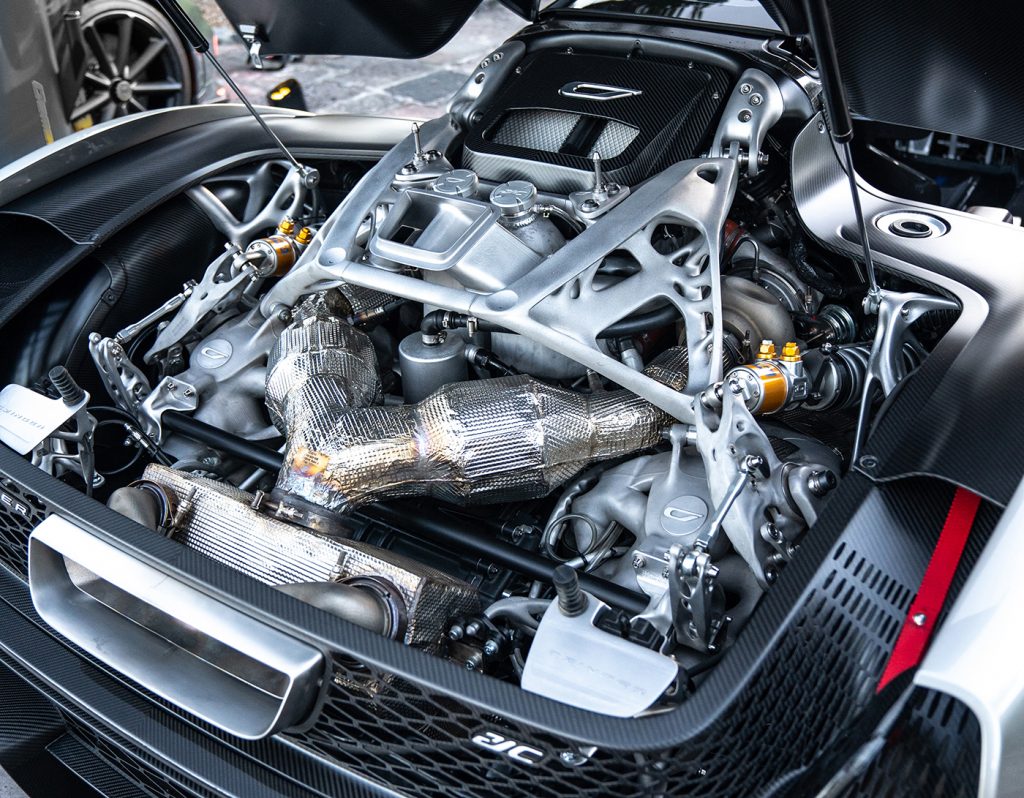
The idea of swapping one material for another is the same mentality that needs to change for metal AM to work in automotive. Simply switching from steel to aluminium, or milling to Additive Manufacturing, is not enough. The Blade offered a glimpse of how automotive design and manufacturing may have to shift to meet regulations, have more flexibility, and stay competitive in the automotive industry. The view of the engine bay (Fig. 2) and the render of the 21C’s rear structure (Fig. 3) show how a lack of traditional processing and tooling constraints can result in an integrated, more organic geometry.
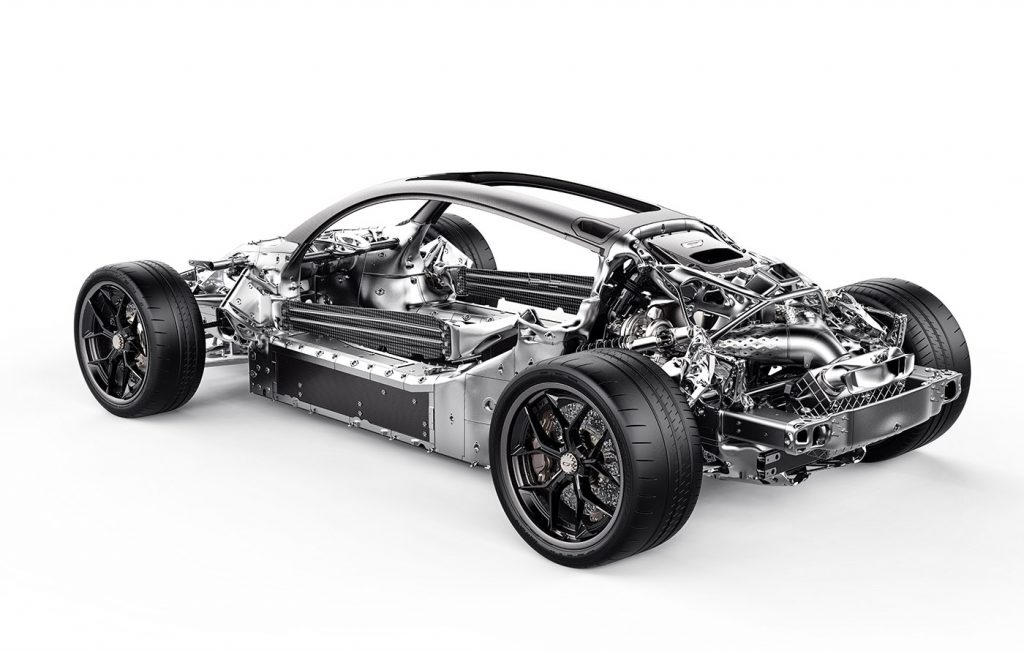
Challenges in moving into metal Additive Manufacturing
“We have to get away from these 100-year-old analogue systems and mindsets,” said Czinger. “With a fully digital end-to-end system, it is possible to build the functionality of braking systems, motors, battery cells, and more directly into the structure of a vehicle.” Digital architecture could eliminate resources, parts, and fasteners associated with housings, brackets, and other components. This digital mindset and architecture have allowed Czinger to become the first advanced car company without any major direct tooling. But, before revolutionising automotive manufacturing, there were challenges to overcome.
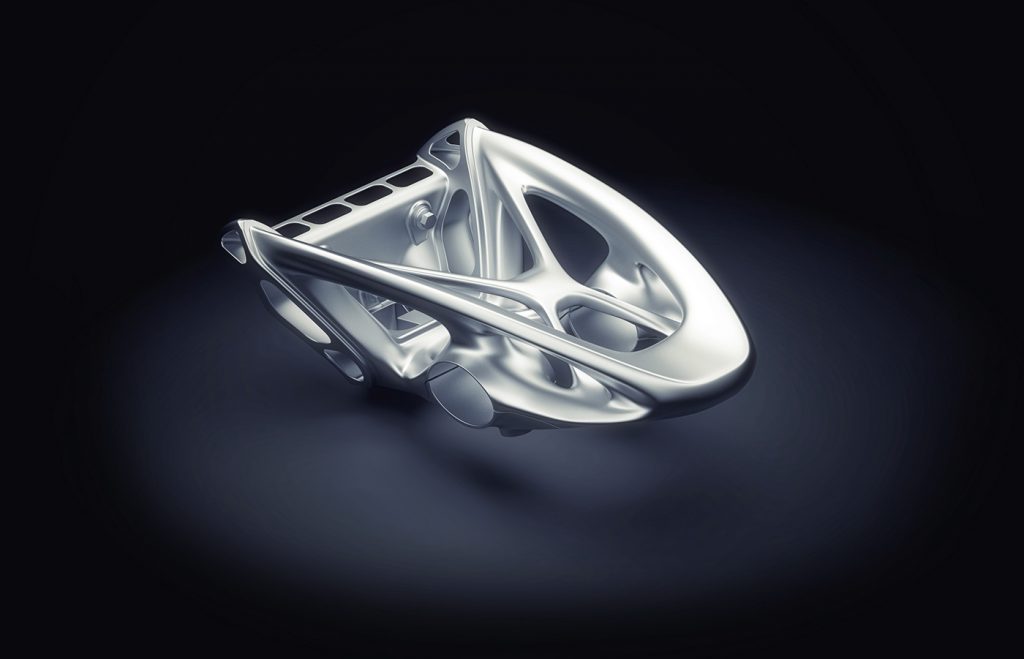
Right now, AM is not known for mass production. For smaller components, metal Binder Jetting (BJT) promises increased overall build rates, but as a process, it is unsuitable for the large, load-bearing parts required for the automotive structural elements designed by Divergent. That is not to say that it will not play a role in the production of smaller, lower-load bearing, AM automotive components – particularly for applications where related processes such as Metal Injection Moulding (MIM) have found success.
Electron Beam Powder Bed Fusion (PBF-EB) is used widely for aerospace component production, but current commercially available models lack the build chamber volume Divergent required, as well as suffering from a general lack of industrial penetration outside of the aerospace and medical device sectors. Also, PBF-EB is a more complex process and challenging for materials with a low melting point such as aluminium, magnesium, and zinc.
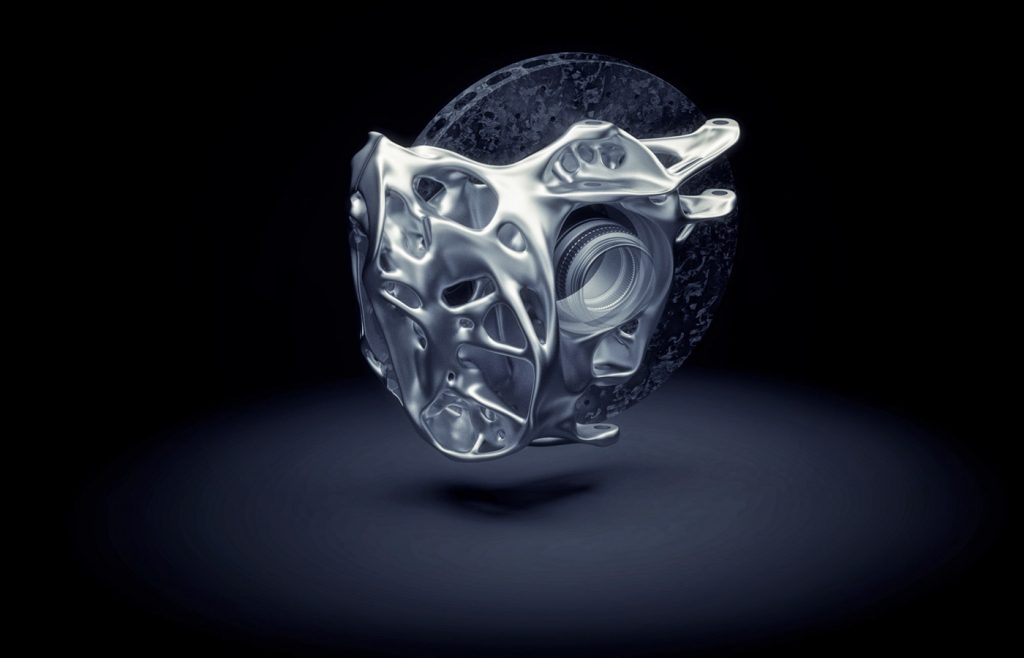
It is Laser Beam Powder Bed Fusion (PBF-LB) that can now deliver the geometric dimensioning and tolerancing (GD&T) and strength specifications needed in a wide range of automotive parts. However, when Divergent 3D was started, the technology did not offer the build rates necessary to compete at an automotive production rate.
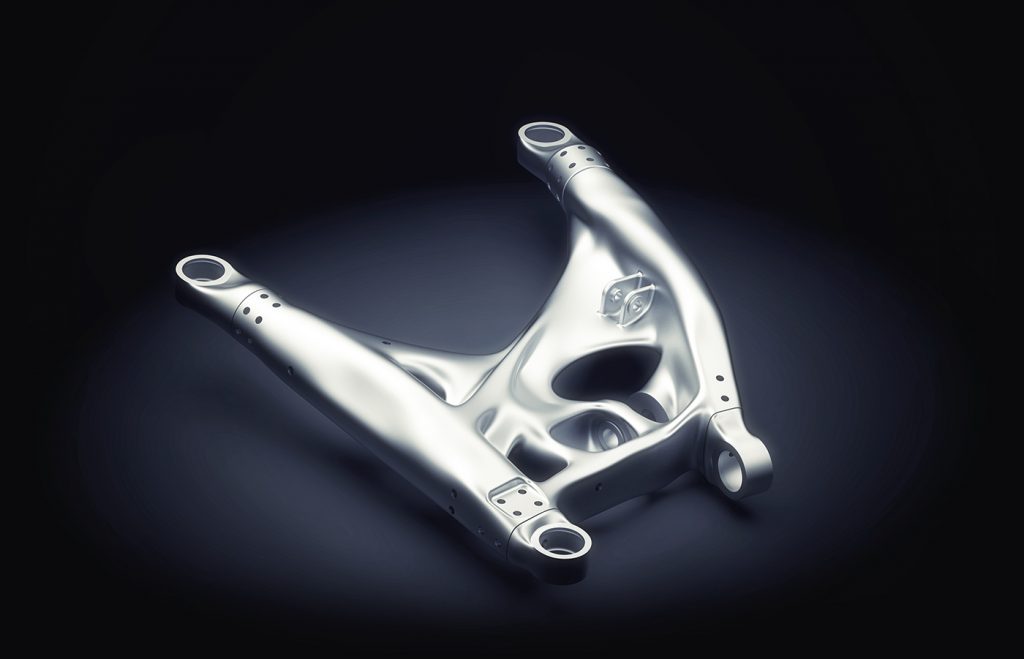
Many companies have since worked on increasing both laser power and the number of lasers to improve build rates. Metal AM has continued to gain interest in the automotive sector, as its adoption and innovation progress in aerospace and other industries, which have benefited from its ability to produce lightweight complex parts, high capacity for customisation, and minimal to no tooling.
Reducing the tooling and upfront costs of automotive manufacturing could represent a disruptive shift in design, manufacturing, and business strategies. But, in order to demonstrate this, it was imperative for Divergent 3D to get metal AM to produce parts at a real industrial production rate. “We had to generate a manufacturing system that was fully optimised across multiple objectives,” Czinger explained. “Everything from stiffness, cost of production, assembly, and creating that structure at a real industrial rate. Not aerospace or prototyping rates, but an automotive production rate! Our initial goal was to target cars in the DEF segments [full-size, exclusive, and luxury cars] with a production rate of around 5,000 vehicles.”
That goal was set over four years ago and, despite metal AM technologies advancing quickly, there wasn’t a machine in the market that could reach the production rate needed. “We knew forming a partnership with an AM machine manufacturer was the best strategy to achieve the necessary production rates,” said Czinger. In 2017, Divergent 3D and SLM Solutions formed a development partnership, which resulted in the SLM Solutions NXG XII 600 (Fig. 7), released in November 2020. This machine is equipped with twelve 1 kW lasers and is capable of building at speeds 5–20 times faster than that of the current state-of-the-art, enabling it to achieve the necessary automotive production rates.
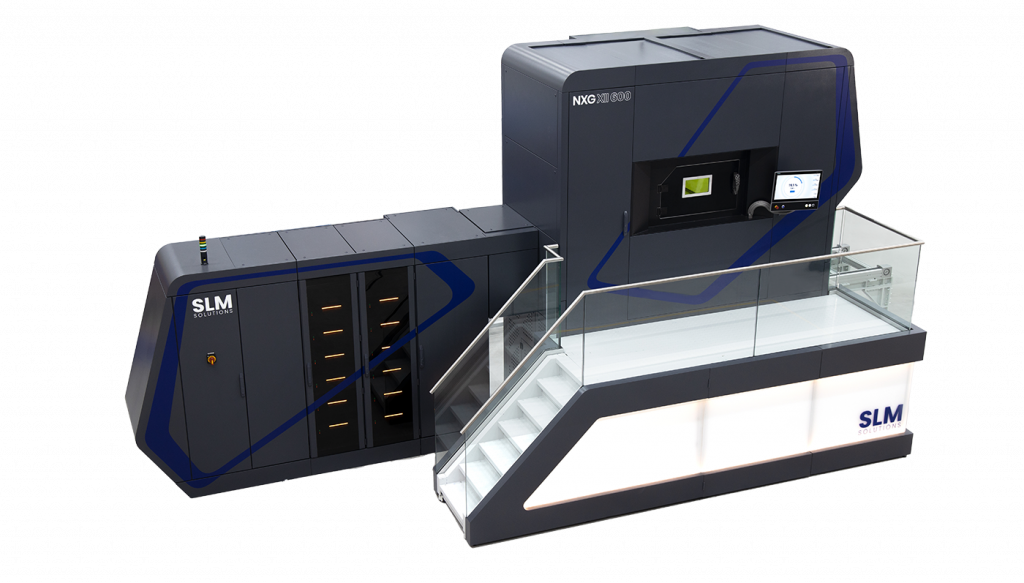
Following the success of this development, the partnership between Divergent 3D and SLM Solutions was extended, with SLM Solutions appointing Kevin Czinger to its supervisory board. Along with seven SLM 500 machines, three SLM 280 machines and one SLM 125 machine, Divergent 3D currently operates two SLM NXG XII 600 metal AM machines, with the third pre-production machine being delivered in February 2022. In October 2021, it announced the purchase of three more, with deliveries starting in June 2022.
The materials challenge
The challenges facing metal AM’s adoption go beyond the AM machine itself. “When we started this goal, metal powders were really limited,” stated Michael Kenworthy, CTO and VP of Additive Manufacturing and Materials at Divergent 3D. “We found some good commercially available aluminium alloys that work well as a heat exchanger or other components, but none of the alloys had the desired performance characteristics we needed for energy absorption in a crash test.”
“Even a material such as Scalmalloy, used in F1 racing, is printable with high elongation and has great mechanical properties, but was not good enough to survive our crash design,” he explained. “It was apparent that we would have to engineer our own material.”
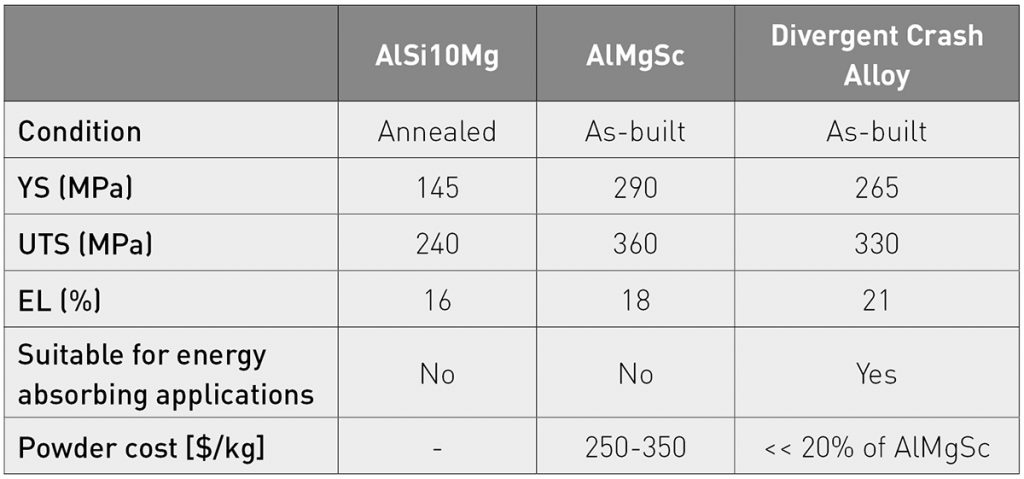
While some companies are currently involved in interesting work with nanoparticles and other research, it is important to think fundamentally about an alloying strategy. To develop a new material, it is imperative to achieve the cost structure the company needs to scale and compete with the mass production and established economics of the automotive industry. Today, Divergent 3D has multiple proprietary alloys and adhesives to maintain the necessary build rates, cost structure, and performance (Table 1, Figs. 8-9).
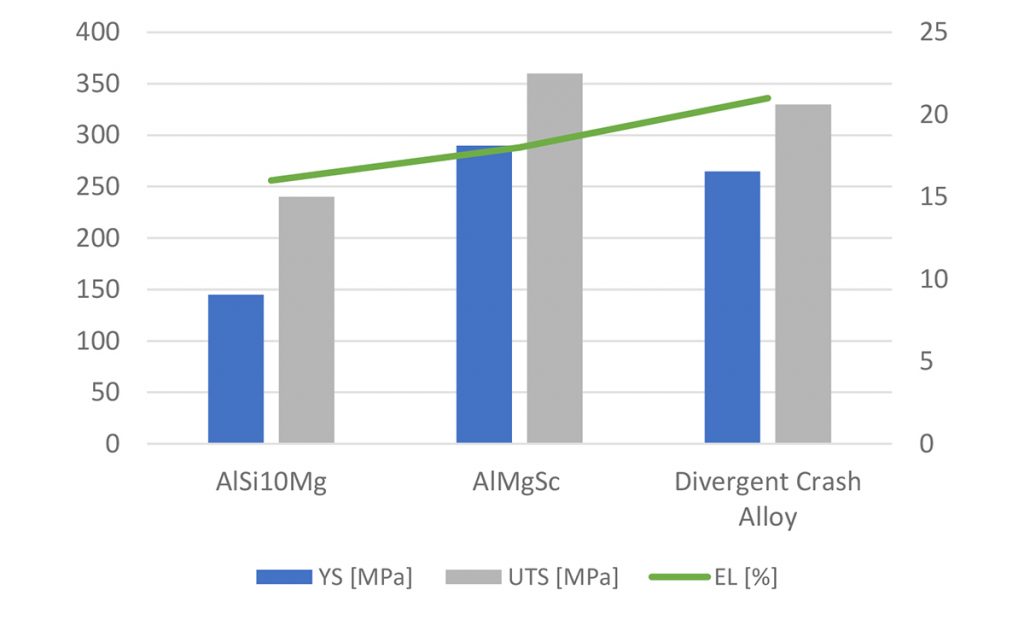
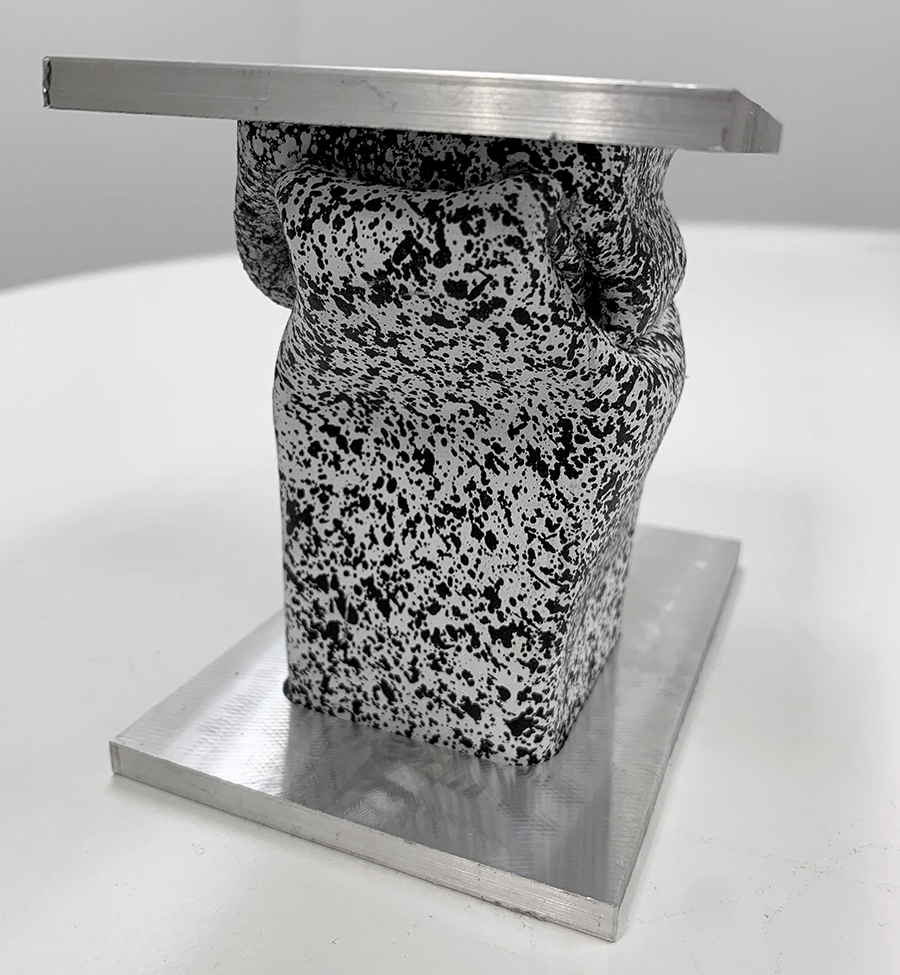
When considering conventional automotive design, selecting aluminium alloys or Scalmalloy over steel seems cost prohibitive. Steel still costs less per pound than aluminium, and can provide greater fatigue strength and a higher endurance limit. While the cost of some higher-end vehicles justifies the additional cost of aluminium, Czinger is not just swapping traditional steel parts. While the current model 21C is a hypercar with a price tag that could justify using aluminium alloys, Czinger believes it will scale for more cost effective vehicles.
Generative design, topology optimisation, and other AI software solutions are now widely available on the market. These programmes give engineers the ability to define constraints and requirements for parts, and let AI generate different designs, optimising and testing designs through iterations which would be beyond the capabilities of the human designer. Generative design tools often create organic geometries that are difficult or impossible to manufacture with traditional processes, but pair well with Additive Manufacturing. The use of these designs makes aluminium more cost-effective to use, thanks to the reduction in weight, the ability to create complex geometries, surface finish, build speed and the potential for the added design features that they offer.
“We are seeing a reduction in mass of 15 to 25% or higher on parts that are already designed for higher end, lightweight vehicles,” Kenworthy explained. “Clearly, there’s a huge dematerialisation opportunity, but there are more benefits. Using software to digitally design and test parts, we drive structures to failure. This fast iterative loop has let us generate stronger, lighter structures that have surpassed the traditional service life by three or four times without failing.” Through its understanding of the process and material, Divergent 3D achieves an accuracy of 95% or better correlation between its simulations and real-world performance.
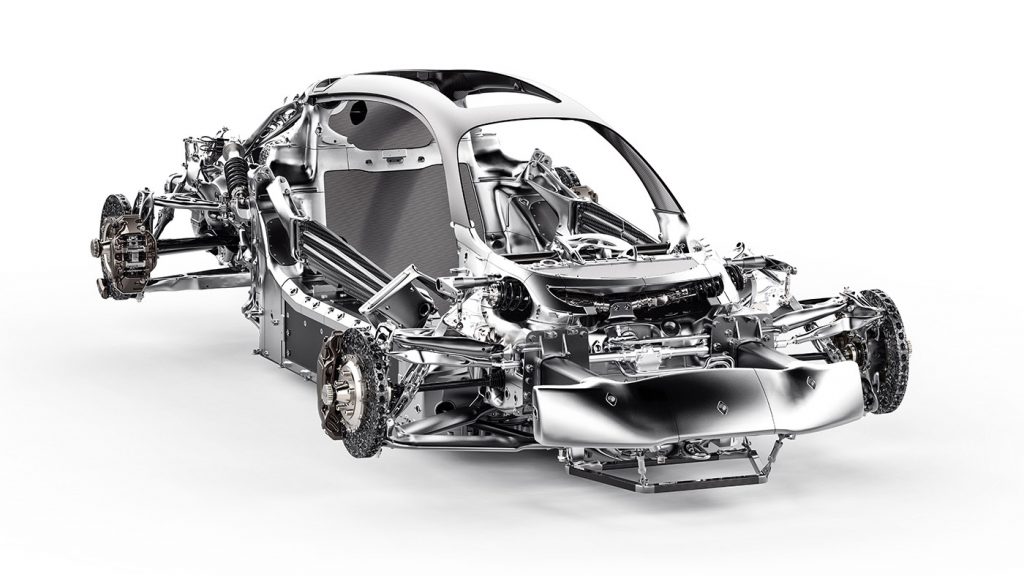
The manufacturing challenge
To bring together these new technologies and materials, Divergent 3D still faced the well-known AM workflow challenges of post-processing, support removal, powder management, and assembly, which needed to be optimised to maintain the high production rates and low costs set by the company. “We have a proprietary process for support removal, if needed, and a process for recycling materials,” Czinger stated. “From a cost perspective, we look at the total system cost. All amortised fixed and variable costs across an end-to-end production system that takes a set of requirement inputs for a product structure. With this total cost and input requirements, our system automatically designs, additively manufactures, and assembles, without the use of fixtures, that structure as an output. That total output cost for the entire system is what counts.”
Divergent has invented a manufacturing solution to address system level challenges. The Divergent Adaptive Production System (DAPS) is a complete software/hardware solution designed to replace traditional vehicle manufacturing: a complete modular digital factory for complex structures (Fig. 11). Given a set of digital requirements as the input, the system automatically computationally engineers, additively manufactures, and assembles complex structures. DAPS can manufacture and assemble structures without fixtures to move seamlessly between different subframes or vehicle models, with zero switchover time.
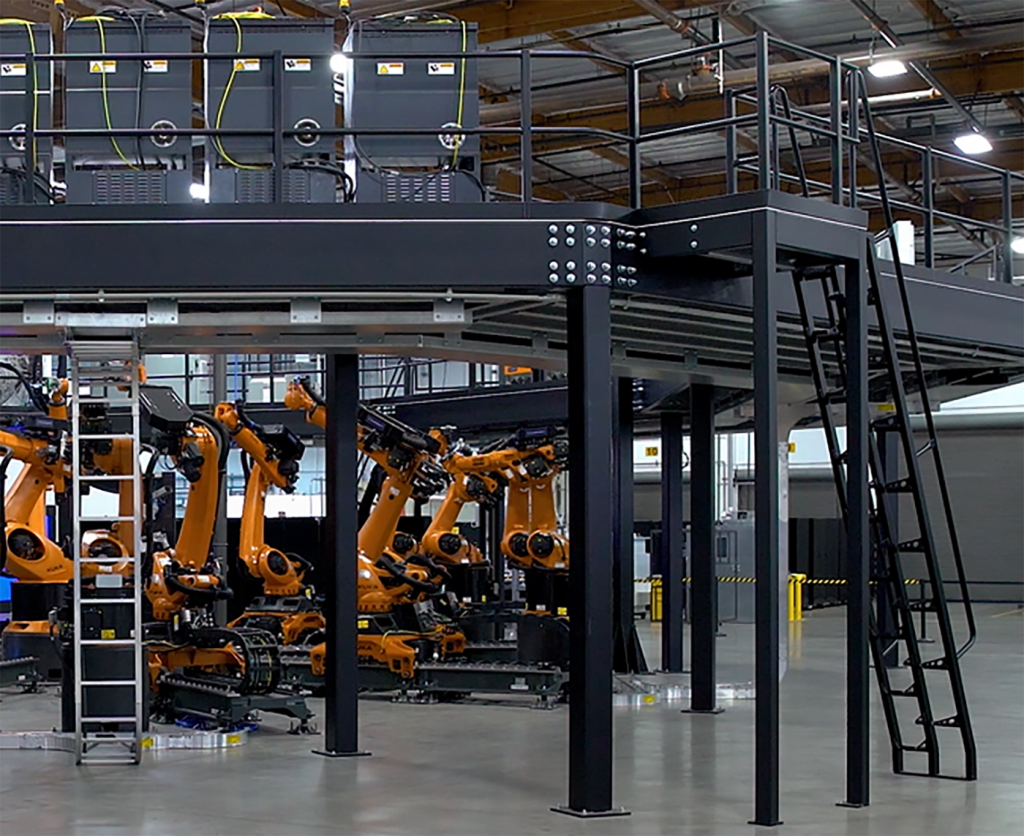
Its modular design helps solve another challenge: adoption. Presenting disruptive technology to industry is bound to see resistance. Companies often adopt new technologies from the starting point of prototypes or case studies, with the idea of starting small, then scaling. With some projects, a new technology pilot may succeed, but fail when scaled.
Divergent 3D was focused on a full, end-to-end digital, modular, and scalable manufacturing system from inception. Using this system, a company could feasibly start with a single unit which could assemble part of a subframe and, as confidence and a ROI is gained, these cells can take over more assemblies on the company’s schedule. As the company grows, more cells can be integrated.
For example, Czinger explained, “If you had an EV with front and rear frames with a production rate of 50,000 to 150,000 subframes annually we could do that with one cell. Then, to scale to 300,000 frames per year, you just add a cell.” The assembly cell has a footprint that is approximately 20 metres in diameter and stands about 6 metres high. Currently, a single assembly cell is capable of producing 50,000 to 150,000 subframes or 10,000 complete vehicle chassis per year, with dramatic cost savings over existing methods.
Additionally, all the tooling and fixturing is replaced, so everything is dynamic for new designs and business strategies. A company can be more dynamic in meeting market demand and responding to technology development, and not locked into a design with a traditional volume strategy that greatly hinders production flexibility.
The results and future developments
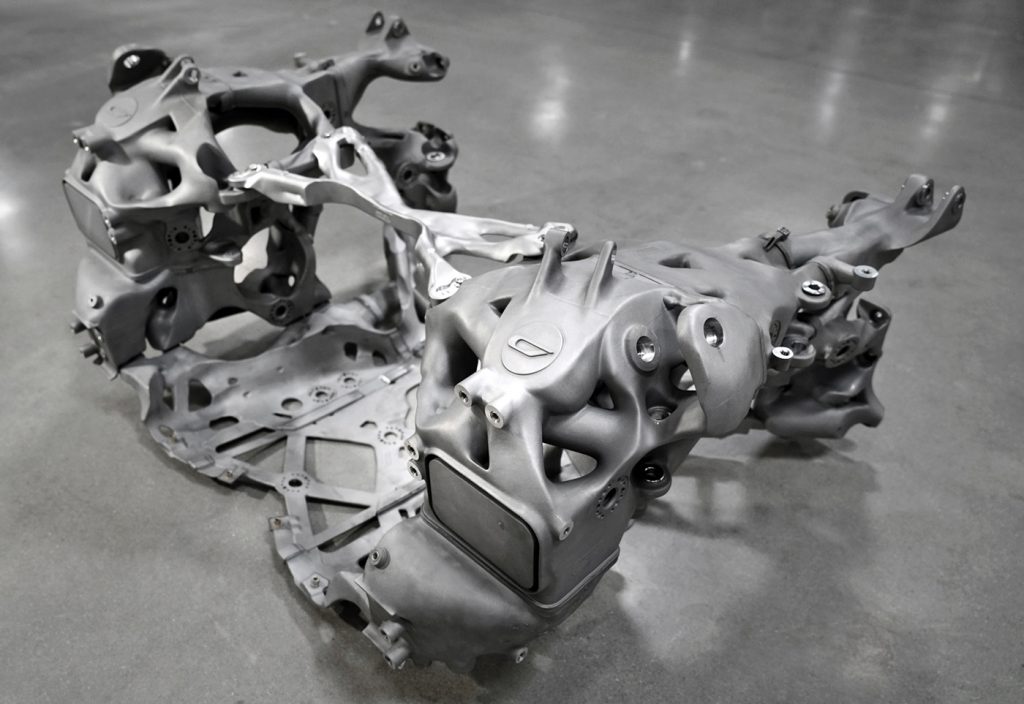
“We have architected, invented, and built our system in house,” stated Czinger. “We use automated design with AI elements, proprietary materials, purpose-built Additive Manufacturing machines, and a fixtureless assembly cell using proprietary adhesives and metrology to design, build, and assemble. There are over 470 patents filed around that production platform and three subsystems.” The results of this technology and work are perhaps summed up best in Czinger’s hypercar: the 21C.
While the number of additively manufactured parts is still increasing, the current version of the 21C has over 350 AM parts, with major applications including the front and rear impact structures, the rear subframe, and entire front structural assembly. The list of metal AM parts continues under the hood with powertrain components, including the intake plenums, all of the exhaust components and heat shielding. Additionally, the gearbox casing is fully optimised for AM and will be additively manufactured for the production 21C vehicle. “We are continually iterating the 21C and seeing further improvements on the horizon including optimised, printed cell carriers for the battery,” said Kenworthy. “About 20% of the car’s total mass is made with metal AM. As we further lightweight some components, we redesign others for AM, so it has remained at roughly the same overall percentage as the structure evolved over the last few years.”
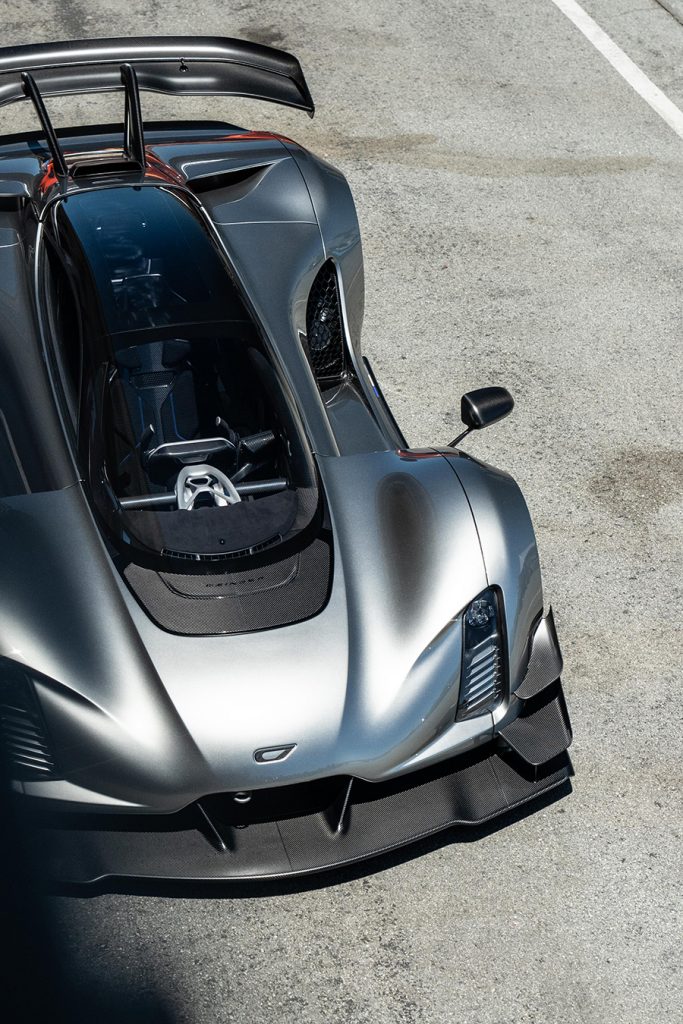
This hypercar, developed with Divergent 3D’s technology, is already breaking lap records for production cars. At the Laguna Seca Raceway on July 21, 2021, the 21C beat the previous McLaren Senna’s record of 1:27:62 by more than 2 seconds, clocking in at 1:25:44. Later, on September 23, 2021, the 21C broke the Circuit of the Americas (COTA) track record, previously set by the McLaren P1, by more than 6 seconds. The new COTA record is 2:11:33.
The 21C shows that Divergent 3D’s architecture delivers extremely high performance right out of the box, and that it is possible to have a fabless car design business model. The hypercar is almost sold out of its initial eighty production units and has grabbed the attention of at least four of the top ten automotive OEMs. Czinger could not disclose the names of these companies, but stated, “The first of those vehicle production programmes will be on the road, at volume production, in the first quarter of 2022.”
What Divergent 3D and Czinger have accomplished proves that metal Additive Manufacturing can move into automotive production, with the right approach. Currently, high-end vehicles in the DEF segment are targeted, but Czinger believes the industry might be only eight to ten years from disrupting compact passenger segment A type vehicles. This technology could change business strategies to offer shorter lifecycles, greater customisation, and more sustainable practices.
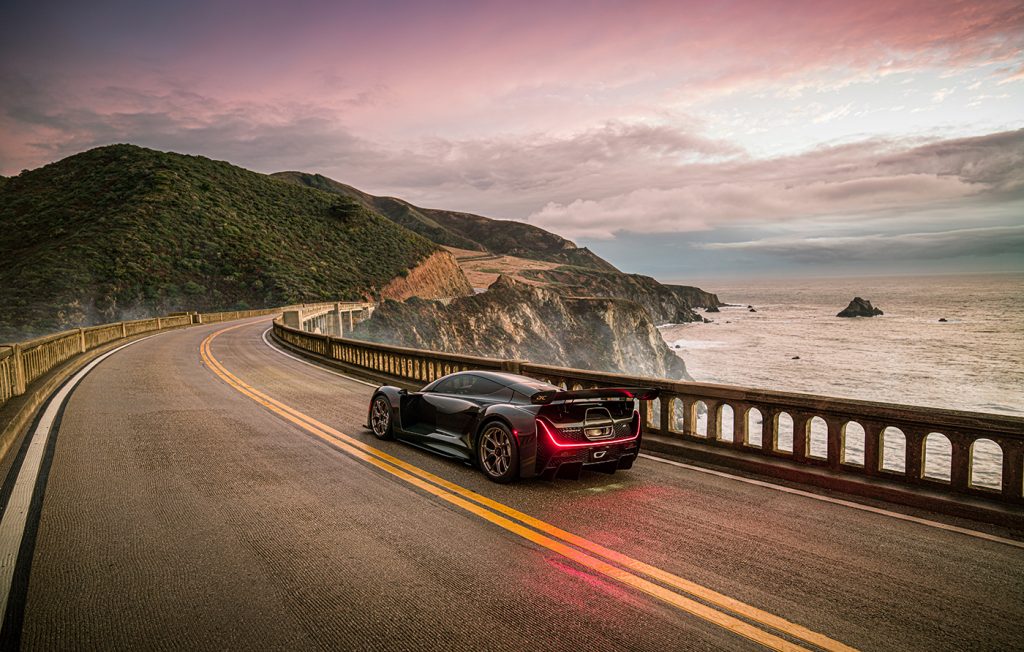
Automotive OEMs will have the freedom to vary their capacity between models and adapt faster to market designs and technologies. As more efficient structures are generated, the digital end-to-end architecture will make it easy to track data and generate cost productivity curves to compare against calculated total system costs. It will be possible to streamline production metrics and compare a minimally viable product against a target market segment, so that management understands how to drive cost productivity metrics and scale accordingly.
These are just some of the reasons why Divergent 3D and Czinger’s 21C is disrupting more than just track records. Divergent 3D’s technology serves as an example of what many companies are striving towards in the new industrial revolution: as the automotive industry continues to see higher regulation and increased electrification, metal Additive Manufacturing will play a pivotal role in modernising older mindsets and production.
“The idea is to ultimately democratise this technology,” said Czinger. “Imagine every major city creating an adaptive digital footprint for itself. Designing and circulating materials locally while sharing information globally. Each system can adjust and adapt to local needs and resources, which will aid in more efficient, flexible, and sustainable production.”
Author
Jeff Kerns
[email protected]
Based in New York, Jeff is a freelance engineering and technical writer, and director of communications for multiple companies.
Contact
Divergent 3D and Czinger Vehicles 19601 S. Hamilton Ave.
Torrance, CA 90502
USA







